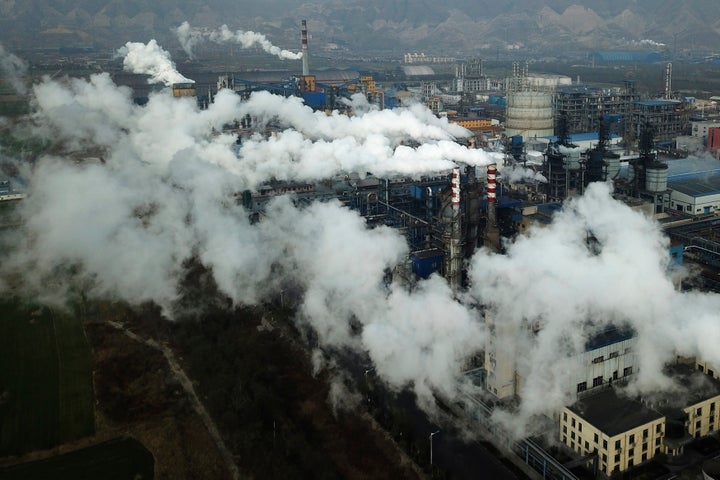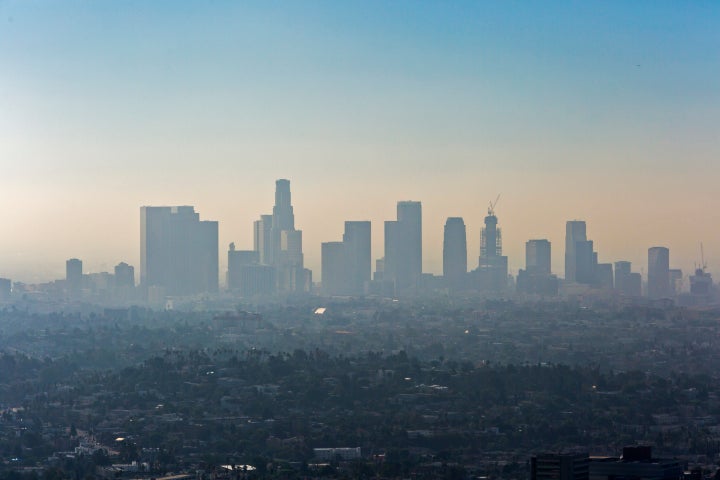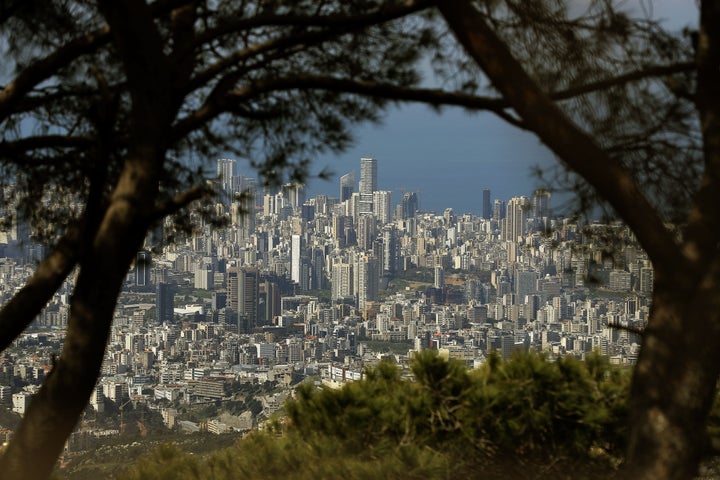As the SARS virus tore through China in 2003, Zuo-Feng Zhang wondered whether the country’s notoriously polluted air might be amplifying its dangers. The answer he and his scientific colleagues found feels frighteningly relevant now, not just for China, but all across a world where SARS’ coronavirus cousin is bearing down on billions of people who already live with unhealthy air.
Sifting through data from five different regions, Zhang’s team concluded that SARS patients living in the most polluted places were twice as likely to die from the disease as those in the cleanest areas.
“We found a very strong correlation between air pollution and deaths” from the virus, said Zhang, an epidemiologist at UCLA’s Fielding School of Public Health. The effect held not just for pollution levels at the time of the outbreak, but for levels over the previous two years as well, indicating prior exposure had likely compromised people’s ability to fight off the illness.
It was a small study, Zhang cautioned in a phone interview, since SARS took far fewer lives than the current pandemic. But the findings, which, given the diseases’ similarities, almost certainly apply to COVID-19 too, are consistent with everything scientists already know about air pollution’s mostly invisible toll on health.
“It stifles the immune response to infections, it actually directly can damage immune cells,” said Aaron Bernstein, interim director of the Center for Climate, Health, and the Global Environment at the Harvard T.H. Chan School of Public Health. “It also tends to be inflammatory in the lung, and that inflammation can interfere with mechanisms that clear pathogens (including viruses) from our respiratory tracts.”

This is not just a problem for China’s cities. Even in cities with much cleaner air ― from Los Angeles and New York to London and Milan ― pollution increases rates of cancer, diabetes, cardiovascular problems, the severe lung syndrome COPD and many other illnesses. That means more people with preexisting conditions that dramatically elevate their risk of complications, and death, if they contract the coronavirus.
In badly polluted countries like India, Pakistan, Afghanistan and Indonesia ― where air pollution was exacting a heavy toll long before the pandemic hit ― it will exacerbate COVID-19’s impact even more than in nations with better air, said Zhang. Iran, where the pace of virus deaths forced officials to prepare mass graves for victims, also has a severe air quality problem.
“Scientists believe viruses may bond with pollution particles, allowing them to remain airborne for longer.”
“People who are living in places with more air pollution may be more likely to get infected with this in the first place, and if they do get infected they’re more likely to die,” Bernstein said. “There will be research looking at COVID and air quality to better understand the relationship, but I’d be surprised if it didn’t show that air pollution was a problem.”
Because disparities in pollution levels within countries tend to track economic and racial divides, the additional coronavirus risk will as well, Bernstein said. In the United States and beyond, “people who are poor, people of color, tend to be more exposed.”
It is not only pollution’s impact on the body that makes it a factor in heightening the pandemic’s dangers. Scientists believe viruses may bond with pollution particles, allowing them to remain airborne for longer and potentially helping them make their way into the lungs.
Dirty air added significantly to the toll of the devastating 1918 flu pandemic, increasing death rates by 10% in badly polluted American cities as compared to less polluted ones, a 2018 study found.

Yet-to-be-published research by the same team has found pollution also worsened flu pandemics in 1957-58 and 1968-69, said Karen Clay, an economics and public policy professor at Carnegie Mellon University and one of the studies’ authors.
Those outbreaks happened before the passage of the 1970 Clean Air Act, when U.S. pollution levels were far higher than they are today. So the results offer a sharper warning for nations such as India and China, Clay said.
While news coverage of COVID-19’s environmental impact has focused on the sharp drops in pollution levels caused by widespread shutdowns, that “supposed silver lining” is only temporary and should not obscure the bigger picture of the serious harm dirty air does to health, Bernstein said.
“It’s also true that at the center of ferocious hurricanes the wind is still, and that’s what we’re seeing now. We’re seeing a momentary reprieve from the ravages of air pollution,” he said.

Still, that reprieve is undoubtedly reducing deaths from heart attacks, strokes and the other pollution-related illnesses, and may also offer some benefit to COVID-19 patients, said Michael Brauer, a respiratory and environmental health professor at the University of British Columbia, in Vancouver.
But while lockdowns have reduced traffic and manufacturing, other sources are continuing to pollute, from coal-fired power plants to the wood and other smoky fuels many in poor nations rely on to cook, and which those in wealthier countries burn for cozy ambiance.
“When I’ve gone for walks around my neighborhood, I smell a lot of wood smoke. People are hanging out at home” and lighting up their fireplaces, Brauer said. “That’s something that could potentially make somebody’s infection worse.”
Wood smoke is thick with particles and toxins that are strongly linked to increased rates of sickness and death. British Columbia’s environment ministry has temporarily restricted burning, saying smoke’s impact could lead to more, and more severe, COVID-19 cases and add to the burden on the province’s health care system.
Brauer said that like the social distancing measures being widely implemented, cleaner air would help “flatten the curve” of the pandemic, reducing the number of patients requiring hospitalization at any one time.
The Trump administration’s decision to relax pollution rules for power plants, factories and other facilities during the outbreak will have the opposite effect, he warned, compounding risks at a moment of viral peril.
Tougher regulation that brings cleaner air would not only improve health generally, but also function as a form of pandemic readiness by making people more resilient when future outbreaks hit, said Zoltán Massay-Kosubek, policy manager at the European Public Health Alliance, an advocacy group.
“We really do not want to be vulnerable and unprepared for the next epidemic,” he said. “The coronavirus situation has just made the invisible visible, and given an additional argument to act on air pollution.”
Beth Gardiner is the author of ”Choked: Life and Breath in the Age of Air Pollution.”
For more content and to be part of the “This New World” community, follow our Facebook page.
HuffPost’s “This New World” series is funded by Partners for a New Economy and the Kendeda Fund. All content is editorially independent, with no influence or input from the foundations. If you have an idea or tip for the editorial series, send an email to thisnewworld@huffpost.com.
A HuffPost Guide To Coronavirus
- Stay up to date with our live blog as we cover the COVID-19 pandemic
- When will life return to normal? Europe has some answers.
- Digestive issues might be an early sign of coronavirus
- How to file for unemployment if you’ve been laid off
- Avoiding going to the store? Here’s how to order groceries online.
- What to do if you live with someone with COVID-19
- How often do we really need to wash our faces?
- The HuffPost guide to working from home
- What coronavirus questions are on your mind right now? We want to help you find answers.
